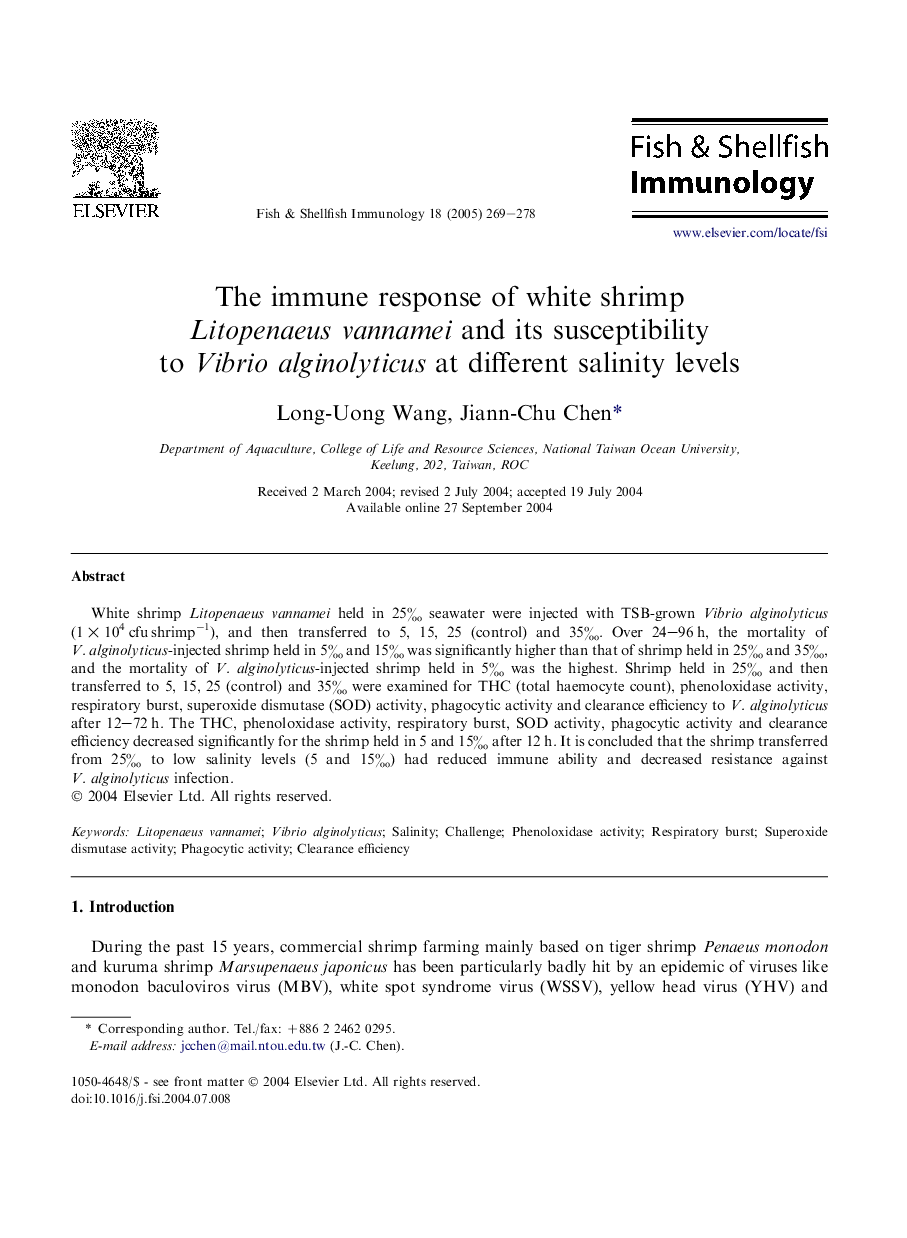| Article ID | Journal | Published Year | Pages | File Type |
|---|---|---|---|---|
| 8978722 | Fish & Shellfish Immunology | 2005 | 10 Pages |
Abstract
White shrimp Litopenaeus vannamei held in 25â° seawater were injected with TSB-grown Vibrio alginolyticus (1 Ã 104 cfu shrimpâ1), and then transferred to 5, 15, 25 (control) and 35â°. Over 24-96 h, the mortality of V. alginolyticus-injected shrimp held in 5â° and 15â° was significantly higher than that of shrimp held in 25â° and 35â°, and the mortality of V. alginolyticus-injected shrimp held in 5â° was the highest. Shrimp held in 25â° and then transferred to 5, 15, 25 (control) and 35â° were examined for THC (total haemocyte count), phenoloxidase activity, respiratory burst, superoxide dismutase (SOD) activity, phagocytic activity and clearance efficiency to V. alginolyticus after 12-72 h. The THC, phenoloxidase activity, respiratory burst, SOD activity, phagocytic activity and clearance efficiency decreased significantly for the shrimp held in 5 and 15â° after 12 h. It is concluded that the shrimp transferred from 25â° to low salinity levels (5 and 15â°) had reduced immune ability and decreased resistance against V. alginolyticus infection.
Keywords
Related Topics
Life Sciences
Agricultural and Biological Sciences
Aquatic Science
Authors
Long-Uong Wang, Jiann-Chu Chen,
